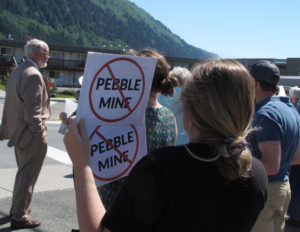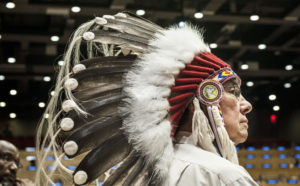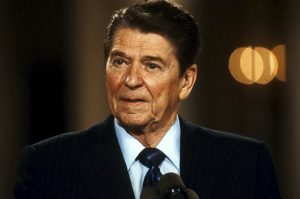‘H’ Is for Hypocrisy
My computer will allow a letter to be displayed at a maximum 500 percent of its normal size. That isn't big enough for a capital "H" that conveys the towering hypocrisies of the Sarah Palin political wardrobe malfunction.My computer will allow a letter to be displayed at a maximum 500 percent of its normal size. That isn’t big enough for a capital “H” that conveys the towering hypocrisies of the Sarah Palin political wardrobe malfunction.
No need to enumerate a comprehensive list, so a partial recitation will have to suffice: Hockey moms don’t usually shop at Saks; Joe Six-Pack’s wife doesn’t set foot in Neiman Marcus unless it is to cross through to the other side of the mall. And no politician — ever — should dip into campaign money for this type of expenditure, even if it is Republican National Committee money that might have been donated by someone for whom Saks and Neiman Marcus are considered on the low end of the high-style trade.
Still, I’m glad the great fashion fiasco unfolded because it gives us a chance to talk in the open about what everybody chortles about in semiprivate: female politicians and their clothes.
“Honestly, I was surprised that it took this long to get around to talking about her clothes. Usually it’s right away — clothes and hair,” says Deborah Tannen, the Georgetown University linguist who is an expert on the differences in men’s and women’s communications styles.
Clothing, Tannen has written, “marks” a woman in business in a way that no man is ever marked. In linguistics, she says, “marking” occurs when something is added to a word to make it different — such as using the suffix ed to denote the past tense. The mark of a woman in business is simply that she looks different from a man.
The dark suit, dress shirt and tie that men typically wear are considered the norm. No man need stray too far from the boundaries. “They might have a red tie, blue tie, but the differences are very narrow,” Tannen says. But women are forced to choose a hairstyle, colors, jewelry and other accessories — each one a potential land mine.
The intensity of the Palin imbroglio goes beyond the flabbergasting political hypocrisy of the Republicans. It exposes, again, the flabbergasting political hypocrisy of the left, particularly those who inhabit the liberal blogosphere.
Immediately after Palin emerged on the national stage, the blogs dubbed her “Stepford Barbie.” Stepford is a reference to a 1972 novel and later film, “The Stepford Wives,” in which suburban women are frighteningly vapid, conformist and submissive. “Barbie” needs no explanation. An alternate epithet is “Caribou Barbie,” a double-barreled put-down of Palin’s Alaska background and her looks.
Why Barbie?
Because Barbie is a “fashion doll.” Girls dress her up in many outfits, accessorizing them and affixing stiletto heels to those permanently arched Barbie feet. So liberals and some in the media stuck Palin with a sobriquet that marked her as an object of sexualized fashion fascination long before the shopping faux pas presented them with an excuse.
But then, no one seems to need an excuse to publicly debate the appearance of female politicians. It’s a bipartisan fetish.
Remember Hillary’s headbands? Long before she was ridiculed for her pantsuits, Hillary Rodham Clinton endured months of hazing about her hair, beginning when she was candidate Bill Clinton’s wife. When she ran for the U.S. Senate from New York in 2000, Clinton traded the bright suits that were her signature as first lady for austere black. “Sixty-two counties, 16 months, three debates, two opponents and six black pantsuits later, here we are!” Clinton proclaimed in her victory speech.
Tannen noted that during the great cleavage caper early in Clinton’s race for the Democratic presidential nomination, some commentary also pointed out that Clinton had once opted for black suits. “If she simply dresses as a senator, it attracts attention,” Tannen says. The suit in the infamous cleavage shot was pink, with a black blouse beneath.
When Elizabeth Dole sought the Republican presidential nomination in 2000, a Rutgers University study of her media coverage revealed that references to Dole’s appearance were made more than twice as often as they were about George W. Bush’s looks — and nine times more often than mentions of rival John McCain’s appearance.
The occasional fashion slip can zing a male candidate, too. John Edwards’ $400 haircuts are the obvious case in point. But ultimately, Edwards’ political career was ruined by an extramarital affair.
So this seems to be the rule of thumb: Women politicians risk trouble just for the clothes they put on; men get into hot water for taking them off. Now that’s a topic that would really take some oversized typeface to explore.
Marie Cocco’s e-mail address is mariecocco(at)washpost.com.
© 2008, Washington Post Writers Group
Your support matters…Independent journalism is under threat and overshadowed by heavily funded mainstream media.
You can help level the playing field. Become a member.
Your tax-deductible contribution keeps us digging beneath the headlines to give you thought-provoking, investigative reporting and analysis that unearths what's really happening- without compromise.
Give today to support our courageous, independent journalists.






You need to be a supporter to comment.
There are currently no responses to this article.
Be the first to respond.